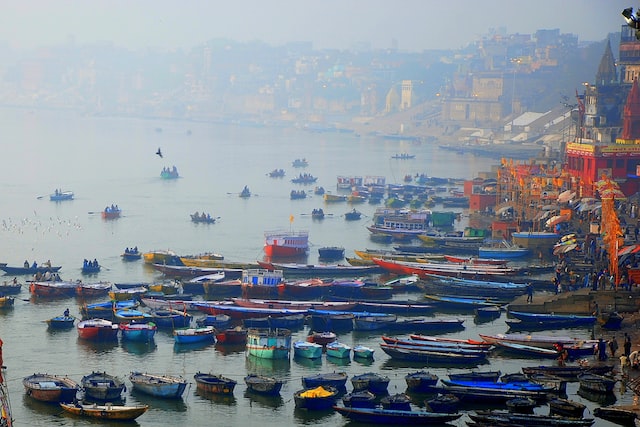CNRS international cooperation tools

International Research Laboratory (IRL)
What is an International Research Laboratory (IRL) ?
An international cooperation tool shared by the CNRS, aimed at structuring highly-localised international research collaboration.
International Research Laboratories are international schemes in which research work is jointly conducted around a shared scientific focus. They structure, within an identified location, the significant and lasting presence of scientists from a limited number of French and foreign research institutions (a single foreign partner country).
International Research Laboratories have a duration of five years.
Who are International Research Laboratories intended for?
International Research Laboratories bring together personnel conducting research at the CNRS or at partner institutions.
How are International Research Laboratories established?
International Research Laboratories are proposed by the scientific Institutes of the CNRS based on structured international collaborations. They involve a high degree of internationalisation among the participating teams, as well as a strong concentration of research activity within a partner organisation.
They are evaluated by peer review within the Institutes as well as by the relevant section of the National Committee for Scientific Research, when necessary. The location of activities (prospect of long-term scientific stays or assignments depending on specific cases) is an essential criterion of evaluation. Consideration is also given to the scientific value of the project, the potential interest of the collaboration and its expected impact, the quality of the team and institutional partnership, the balance between institutional partners in contributing resources, the participation of young researchers, collaboration history, ethics, and financial justification.
The decisions relating to the creation or renewal of International Research Laboratories are made by the CNRS Executive Board.
What are the outlines of the institutional formalisation of International Research Laboratories?
International Research Laboratories are developed over a year, during which a cooperation agreement is negotiated between the various French and international supervisory bodies involved.
How are International Research Laboratories financed?
In addition to the resources pooled by the institutions involved and directly provided by participating laboratories, International Research Laboratories receive, over their duration, funding earmarked by the CNRS for a total amount comprised between €75,000-€100,000 . Managed by the CNRS laboratory overseeing the International Research Laboratory, these funds are allocated in annual instalments depending on the initial project, scientific assessments, and the annual financial reports issued by its director and members.
Should a dedicated unit be created, the funds are allocated to this structure, and supplemented by specific resources (functioning, equipment, investment), and the assignment of personnel.
What is an International Research project (IRP) ?
An international cooperation tool shared by the CNRS, dedicated to strengthening research partnerships.
International Research Projects are collaborative research schemes between one or more CNRS laboratories and one or two laboratories from foreign countries. They strengthen previously-established collaboration through short- and medium-term scientific exchange. They are aimed at organising working meetings or seminars, developing joint research activity including field research, and supervising students. The French and foreign teams concerned must have already shown their capacity to collaborate (for example through one or more joint publications). These programmes have a duration of five years.
Who are International Research Projects intended for?
International Research Projects are intended for staff conducting research in a CNRS or partner unit.
How to propose an International Research Project?
Applications should be submitted to the CNRS scientific Institute in charge of the applicant’s unit. It is recommended that candidates contact the international relations correspondents within their Institute as early as possible, in order to find out about the specific procedures for submitting a project. For interdisciplinary projects, the various Institutes concerned may be informed.
How are International Research Projects evaluated?
Proposals for International Research Projects are evaluated by peer reviews within the CNRS scientific Institutes based on the following criteria: scientific value of the project, interest of the international collaboration, scientific quality and complementarity of teams, balanced distribution of scientific activity between partners, participation of young researchers, ethics, financial justification, and past relations between the partners.
What are the outlines of the institutional formalisation of International Research Projects?
Once selected, International Research Projects are the subject of institutional letters of commitment from the French and foreign institutions willing to support them, for example by granting additional funds in accordance with the internal evaluation and selection procedures specific to each institution.
How are International Research Projects financed?
In addition to the resources directly provided by the participating laboratories, International Research Programmes receive funds specifically earmarked by the CNRS for international mobility between teams and for organising meetings and field assignments, for a total amount comprised between €50,000 and €75,000 over the duration of the project. Managed by the CNRS laboratory overseeing the International Research Project (lead laboratory), the CNRS funds are allocated by annual instalments on the basis of the initial project, scientific assessments, and annual financial reports issued by the lead laboratory and its partners.
What is an International Research Network (IRN) ?
An international cooperation tool shared by the CNRS, dedicated to structuring international research networks.
The purpose of an International Research Network is to structure an international scientific community around a common theme or research infrastructure. It promotes the organisation of international workshops and seminars, as well as thematic schools organised by the network partners in France and abroad. It brings together, for a duration of five years, researchers from one or more French laboratories, including at least one from the CNRS, as well as from several international partner laboratories.
Who are International Research Networks intended for?
International Research Networks are intended for personnel conducting research in a CNRS unit, as well as their scientific partners in France and abroad.
How to propose an International Research Network ?
Applications should be submitted to the CNRS scientific Institute in charge of the applicant’s unit. It is recommended that candidates contact the international relations correspondents within their institute as early as possible, in order to find out about the specific procedures for submitting a project. For interdisciplinary projects, the various Institutes concerned can be informed.
How are International Research Networks evaluated?
Proposals for International Research Networks are evaluated by peer reviews within the CNRS scientific Institutes based on the following criteria: scientific value of the project, interest of the international collaboration, scientific quality and complementarity of teams, past relations, balance of participation in scientific activity, participation of young researchers, ethics, and financial justification.
Special attention will be given to the identification of targeted objectives relating to the expected impact beyond the scientific activity itself (for example, preparation of a joint response to calls for proposals, promotion of joint programming, insertion into multilateral networks, organisation of the activity around a research infrastructure).
What are the outlines of the institutional formalisation of International Research Networks?
Once selected, International Research Networks are the subject of institutional letters of commitment from the French and foreign institutions willing to support them, in particular by granting additional funds in accordance with the internal evaluation and selection procedures specific to each institution.
How are International Research Networks financed?
In addition to the resources directly provided by the participating teams, International Research Networks receive funds specifically earmarked by the CNRS for international mobility between the laboratories involved, and for setting up international workshops and seminars, working meetings, and thematic schools organised by the partners, for a total amount comprised between €50,000-€75,000 over the duration of the project. Managed by the CNRS laboratory overseeing the International Research Network (lead laboratory), the CNRS funds are allocated by annual instalments depending on the initial project, scientific assessments, and annual financial reports issued by the lead laboratory and members of the International Research Network.
What is an International Emerging Action (IEA) ?
An international cooperation tool shared by the CNRS, dedicated to exploring new subjects and partnerships on the international stage.
International Emerging Actions are PI-to-PI projects whose purpose is to explore new fields of research and international partnerships through: short-term mobility of scientists, the organisation of working meetings, and the initiation of early-stage joint research works for shared scientific projects. These actions have a duration of two years.
Who are International Emerging Actions intended for?
International Emerging Actions are intended for personnel conducting research in a CNRS or partner unit.
How to propose an International Emerging Action?
PIs are invited to submit their application during the annual call for proposals launched by the CNRS’s European Research and International Cooperation Department (DERCI), and to submit their application on the CNRS CoopIntEer platform between the months of June and September.
In line with the CNRS’s scientific policy, the terms of the call for proposals can specify particular subject-related or geographic priorities depending on the Institute, applicable to the units of these Institutes.
A letter of support from the foreign partner is expected as part of the application process, indicating possible co-financing for the implementation of the project.
How are International Emerging Actions evaluated?
Proposals for International Emerging Actions are evaluated by peer review within the CNRS scientific Institutes based on the following criteria: scientific value of the project, interest of the international collaboration, scientific quality and complementarity of teams, participation of young researchers, ethics, and financial justification.
No pre-requisites in terms of previous exchanges or publications are required.
How are International Emerging Actions financed?
As a complement to the resources provided directly by participating teams, International Emerging Actions receive funds earmarked by the CNRS for international mobility between the laboratories involved, for organising working meetings, and implementing field assignments between partners, for a total amount comprised between €10,000-€14,000 over the duration of the project. Managed by the CNRS laboratory in charge of the International Emerging Action, funding is allocated by annual instalments depending on the initial project, scientific assessments, and annual financial reports issued by the CNRS laboratory and its partners.






















